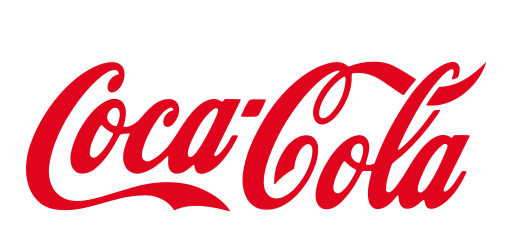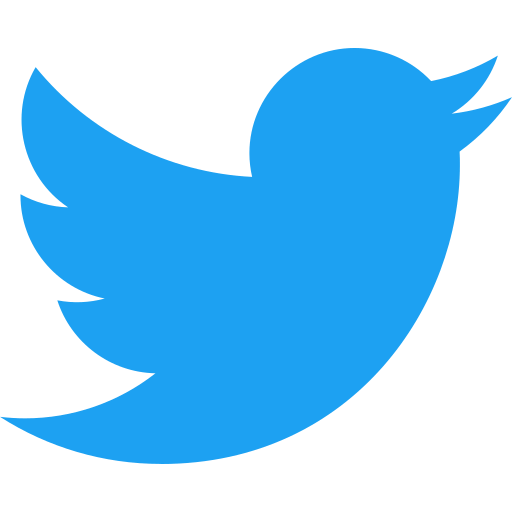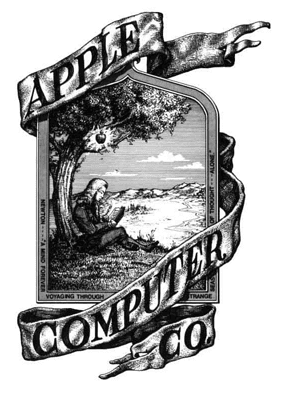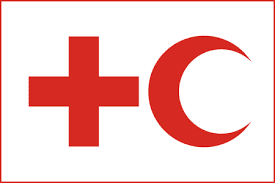A logo is a drawing that represents a company, organization, or product. It is also a necessary communication and marketing tool, as it helps to distinguish the company, its services, and its products, and can reduce its social and commercial mission and objectives. Therefore, designing an attractive and professional logo has become one of the necessities, as companies and institutions use it in all their advertising campaigns, and it can be displayed on several media, such as television and digital ads, on buses and products, and even on clothes.
table of contents:
- When do I need to design a logo?
- Professional logo specification
- Steps to design a professional logo
- Inspirational examples of company logo designs
- Do I design my company logo myself or do I hire a professional designer?
When do I need to design a logo?
Whether you are the owner of a company, restaurant, or shop, you will need to introduce your company, project, or commodity to customers, and the best way to do that is by designing an attractive logo that expresses the nature of the services or products you provide.
The logo represents a symbol of trust between the consumer and the company or service provider. Once they see your logo, they will feel confident in your product or service, especially if you provide high-quality services compared to your competitors. According to statistics, 91% of consumers prefer to buy from a well-known brand over buying from another. Unknown.
Professional logo specification
1. Simplicity
The goal of the logo is to link the symbol of the company or organization to the imagined mental image of it and to make it easy to remember. Therefore, simplicity should be taken into account when designing your logo, as simple logos are better able to achieve their desired goals. One of the best examples of the concept of simplicity is the McDonald's logo, which consists of just the first letter of the company's name, without additions, embellishments, or complications.

2. The connection between the logo and the field of work
When designing a logo for a company or organization, it should be appropriate to the field in which it operates. For example, if you want to design a logo for a law firm, the design should be serious, and away from any comic models. Also, the logo should contain indications of the field of work.
3. Excellence
Your logo should be distinguished by unique characteristics so that the audience does not confuse your services and products with those of competitors. Therefore, it is advised when starting to design a logo to use only black and white colors, as this helps to determine the shape or model required for the logo. Because colors are secondary to design.
4. Focus on memory
A good slogan sticks in the mind and people don't forget it so they can remember it if they only see it for a few seconds.
5. Learn from others
Benefit from and learn from successful logos and design experts. Avoid imitation, and be creative. You can learn more here: 10 trendy trends that will enable you to design logos that will last for years
Steps to design a professional logo
Logo design is an art and an inspiration for creative ideas. Therefore, there is no unified pattern that everyone should adhere to. Each designer has his own method and style, but the logo design steps are almost common and familiar to designers. Here are the most prominent of these steps:
The first step: is preparation and preparation
If you are going to make a logo for a client, the first thing you have to do is talk to him about what he wants from the logo, and his initial vision for it. Also, ask him if his company or project had a previous logo. If so, inquire about the reason that made him look for a new logo. This will give you a good idea of what the customer wants and can give you initial ideas to start with.
Step Two: Inspiration
A good way to get ideas is to look at other similar businesses. For example, if you want to design a logo for a non-governmental organization that works in the field of education and combating illiteracy, the first thing you have to do is search for logos of similar organizations and initiatives. You can search on Google Images, or on one of the websites. logos. Just remember to be creative, take advantage of others, and borrow ideas from them, but don't copy or steal their ideas.
Also, one of the ways to search for logo ideas is to study the field of work of the company or organization whose logo you want to design and research its history and distinctive features. Gather all the important information about them, search the Internet for similar companies, study their logos, and try to collect ideas.
The shape and colors of the logo must comply with the field of work, and the users of the services or goods provided by those companies. For example, a logo for a flower shop may contain artistic images and fonts, and a set of bright and vivid colors, but this will not be appropriate if you want to design a logo for a law firm, a car repair shop, for example.
The third step: practical implementation
The practical steps for designing the logo and bringing it to light are divided into several stages through which many details are taken into account, the most prominent of which are:
a. Preliminary drawings: At this stage, the process of drawing prototypes, or what is called sketches, begins, which are experimental, exploratory drawings.
Some designers prefer to work directly on design programs and applications, thinking that they will save time in this way, but design experts recommend resisting this urge, and starting using pens, pencils, and paper first because it is faster and easier.
The importance of this stage lies in the fact that it enables you to extract ideas from your head and convert them into visual graphics and shapes that can be judged more easily and clearly. After you feel that the initial features of the logo are beginning to become clear, you can then start implementing it on the computer using your favorite program.
B. Scalability: The logo should appear well when enlarged or reduced while maintaining the clarity and message that it wants to convey. The owner of the logo may want to display his logo on a two-meter billboard, and he may also want to display his logo on a T-shirt, or A cup of coffee.
c. Choosing the right colors: It is one of the most important considerations that can help design a professional logo. Some clients will impose specific colors on you, in this case, you have to respect their wishes and stick to the colors they want, but if the client gives you the freedom to choose, then choose colors that are consistent and appropriate for the content of the logo.
Dr. Workability on dark backgrounds: A logo may look good when viewed on a light background, but may not when displayed on a dark background (or vice versa), so you have to be careful and test the workability of the logo on different backgrounds.
e. Font style: Choosing the right font will help you design a unique logo. Look for attractive and distinctive font, as long as it is clear and easy to read. One successful example of choosing a distinctive font is the famous “Coca-Cola” logo.

And the. Proportionality and symmetry: We automatically prefer proportional and symmetrical shapes as opposed to chaotic and haphazard shapes. So, consider proportionality in the logo as much as possible. One of the best examples of proportion is found in the design of the Twitter logo.

g. Make the logo active: When designing a logo, make sure to add a sense of movement to the design. As this gives a tint of vitality and activity to your logo.
h. Design more than one logo: You may have a lot of ideas and visions that you want to express and incorporate into the logo. If you are not able to include them all in one design, design more than one logo and then choose between them.
i. People's opinions about the logo: After designing the logo, present it to a group of individuals, whether with experience in the field of design, or ordinary people. If there is more than one logo, ask them which is the best. You can also ask them to describe the logo in several words, such as: exciting, beautiful, motivating, boring, lively, attractive, ugly, expressive, meaningless, and so on. Based on the answers you get, you can make your final decision on the logo.
Fourth stage: finalizing the design
Make sure that you like the logo first, and that you are satisfied enough. If you are not convinced, take your time, or consult an expert, and when you feel that the logo is ready, send it to the customer.
Rarely will the customer be fully impressed with your design, as he will often have some reservations and notes, and will ask you for some modifications. Focus on what your customer wants and deal with his modifications smoothly and flexibly.
Also Read: Is It Time To Redesign Your Company Logo?
Inspirational examples of company logo designs
Android logo

One of the most popular logos of all time is the Android system logo, which is a cute green robot. When we see a picture of a robot, the first thing that comes to mind is the future, renewal, and innovation, which are characteristics that distinguish the company that owns the Android system, which is Google.
Apple logo
Apple's first logo was complex, depicting the story of the apple that fell on Newton, a metaphor for the company's creativity and innovation.

Although the story of the logo is expressive, the problem is that the logo is very complex, and it was difficult to place it on the devices that are manufactured, and this is what “Jobs”, the founder of the company, noticed, so he asked designer “Rob Janov” to design a new, simpler logo for the company. , but keeping the idea of the logo.

The logo, designed by Rob Janov, was derived from the idea of the previous logo, and instead of drawing the entire scene of the story of Newton's apple, it was enough to draw the apple around which the story revolves. For people to know that it is an apple (and not a cherry, for example), he left a space at the tip, which indicates the bite. He also played on the linguistic aspect, as the word “bite” in English is similar in pronunciation to the word “byte” related to a computer.
Also read: How to build brand awareness .. Apple as a model.
Crescent and Red Cross logo

The Red Cross logo was used by paramedics and patient transport vehicles in wars so as not to be attacked and bombed, and it was adopted by European powers and then circulated at the international level. But there was a reservation on the part of the Ottomans, because they saw that the red cross emblem carried a religious connotation, so the Ottoman Empire announced that it would use another emblem, which is the red crescent, to distinguish its ambulances, although it continued to respect the red cross emblem that protects the ambulances of its enemy.
Amazon logo

The first thing that comes to your mind when you see that orange arrow in the Amazon company logo is that it represents a smiling face, but Amazon has an additional meaning for that arrow, as it represents the diversity of goods and products in Amazon stores, and the logo expressed that with the arrow that comes from the letter “ A” to the letter “Z”, indicating that the company sells everything.
Do I design my company logo myself, or do I use a professional designer?
With the proliferation of free logo design tools, it has become easy for you to design your own logo in a short time and for free, as the logo design tools put at your disposal a lot of ready-made templates, color palettes, and various symbols.
Conclusion
But if you are looking for unique and distinctive logos that really stick with the audience (and are not stereotyped like those offered by logo design sites), we advise you to seek the help of a professional logo designer who can design a logo that lives up to your aspirations, and you can put your own mark among the logos of your competitors.


